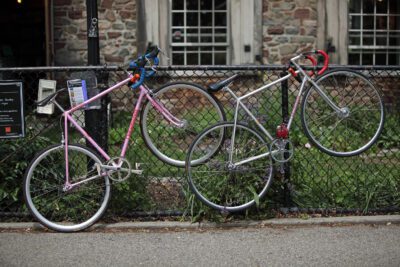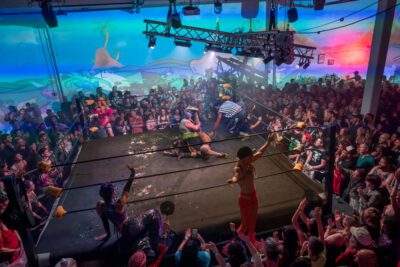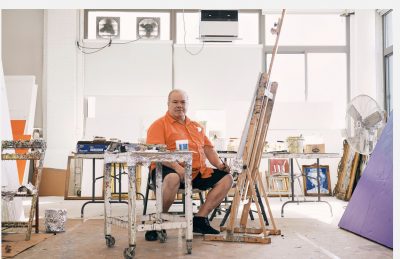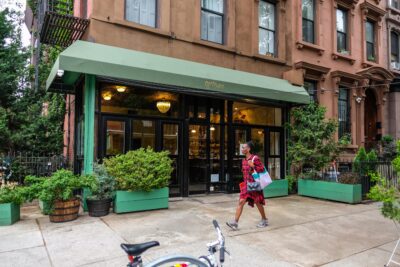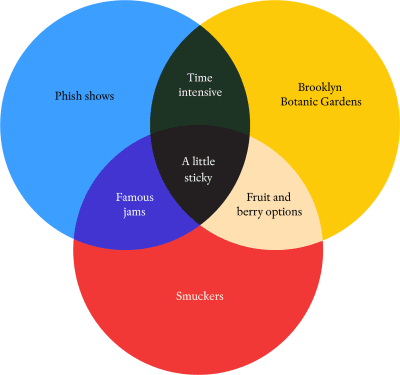'Mind Forged Manacles/Manacle Forged Minds' detail (Courtesy of More Art, Photo: Daniela G. Maldonado)
See Fred Wilson’s ‘Mind Forged Manacles’ before it comes down
‘It answers questions’: The contemplative ironwork sculpture ends its year-long installation in Columbus Park on June 27
After a year of being situated in Downtown Brooklyn’s Columbus Park, a now-familiar sculpture will be coming down in five days — only after having revealed new truths to both passersby and the artist himself, all asking, “Who is looking in? Who is looking out? Who is free? Who is trapped?”
One year ago, Brooklyn-based multimedia artist Fred Wilson installed his first large-scale public artwork here. Titled “Mind Forged Manacles/Manacle Forged Minds,” layered boxes of decorative ironwork seem to imprison six sculpted people — solemn, enlarged wooden recreations of Senufo rhythm pounders, ritual objects integral to a Malian tribal dance. Wilson considers the figures spirits of past trauma, and, in Bob Marley’s words, “mental slavery.”
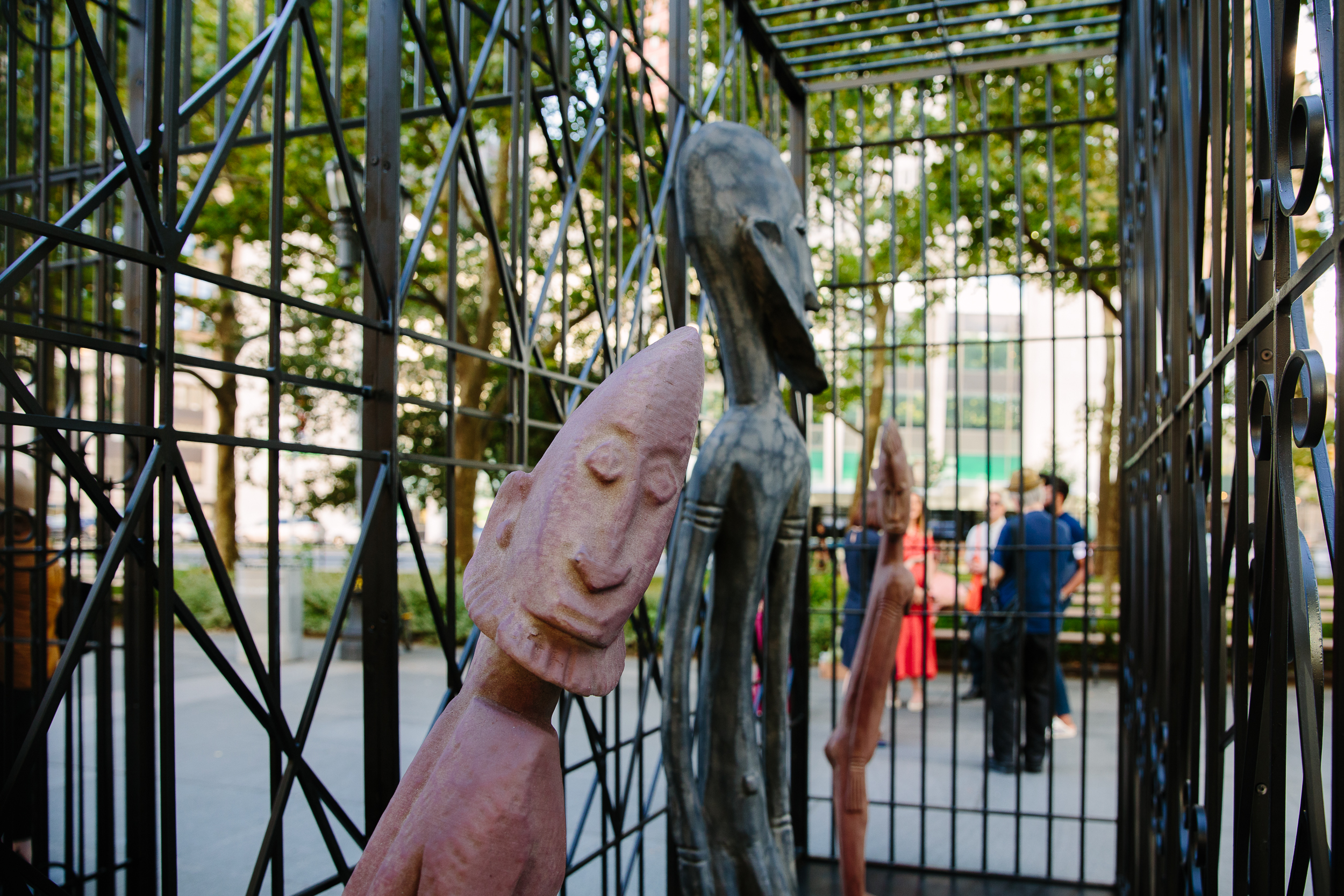

Senufo rhythm pounders in ‘Mind Forged Manacles/Manacle Forged Minds’ (Courtesy of More Art, Photo: Daniela G. Maldonado)
Although not quite monument-sized, Wilson’s sculpture substantially fills out Columbus Park’s wide-open, stone-paved promenade, a favorite spot for the weekday lunch crowd, on break from the countless clerical office jobs that keep the immediate area’s legal buildings — like the Kings County Supreme Court, Kings County Family Court, and many more — all operational.
Taking its title from William Blake’s poetic 1794 treatise on the Industrial Revolution’s lack of tenderness, “Mind Forged Manacles/Manacle Forged Minds” stands equidistant between a sculpture of the revered clergyman, abolitionist and orator Henry Ward Beecher (which has sat on the park’s north end since it was dedicated in 1891) and another tribute to Christopher Columbus, which at one point languished in storage for 65 years, but has towered atop its present pedestal before the New York State Supreme Court Building since 1971. The striking contrast between Wilson’s sculpture and the figures bookending it emphasizes the artwork’s inward/outward duality. We build barriers to keep people out. They also enclose people within.
Prolific programming has activated “Mind Forged Manacles/Manacle Forged Minds” throughout its year-long run — which concludes on June 27 — including choral performances, poetry readings and a three-part conversational series. It won’t be quietly disassembled in the night, either. Jonathan González and Katrina Reid will take it apart before a crowd in broad daylight during a final, movement-based performance — followed by a community reception, with food.
“Inspired by Fred’s work, it felt that the time had come for the barriers to come down both physically and metaphorically, and to celebrate that moment in community,” says Micaela Martegani, director of the New York City-based public art nonprofit More Art, which spearheaded the installation.
More Art first reached out to Wilson “several years ago” to initiate this installation’s development based both on his acclaim and his New York clout, says Martegani. After months of conceptualizing, More Art proposed the work to the Downtown Brooklyn + Dumbo Art Fund, part of New York State’s Downtown Revitalization Initiative. It took shape through NYC Parks’ Art in the Parks.
“Given Wilson’s experience reframing cultural objects and engaging with social and political issues, our interests aligned,” Martegani says, noting that this piece isn’t “site specific,” even if it does encourage viewers to be “site conscious.” The park offered an ideal fit since it “amplifies the themes already relevant in the work, and it sparks conversations around public monuments and who we decide to memorialize, as well as mass incarceration and abolitionism.”
Wilson, born in the Bronx, tells Brooklyn Magazine that while he spent a lot of time in Bed-Stuy growing up, he’d never been to Columbus Park prior to this project. The artist now lives in the East Village and works out of Williamsburg — he’s owned the building his studio’s in since just after 9/11. Wilson’s practice spans decades and mediums, from glassblowing to printmaking, diverse as his African, Native American, European, and Amerindian roots.
By this point, Wilson considers himself a conceptual artist, meaning his real medium lies in ideas as opposed to any one material. Sometimes he creates installations simply by rearranging the components available in a museum — the works in its collection, but also its lighting and wall text. This approach encourages new perspectives on entrenched historical narratives.


‘Site conscious,’ Boroigh Hall looms over the sculpture to the south (Courtesy of More Art, Photo: Kris Graves)
Forged in personal history
“Mind Forged Manacles/Manacle Forged Minds” has personal origins, too. Wilson’s father was a civil engineer interested in philosophy and poetry, including William Blake’s. As he toyed with the notion of incorporating iron into his art, Wilson discovered a book titled “William Blake and Slavery” that melded both his and his father’s interests. This sculpture’s use of metal, fabricated to Wilson’s specs by a Brooklyn-based shop, harkens not only back to the artist’s childhood memories and Blake’s fascination with the barriers society builds throughout itself, but also with ubiquitous visual motifs. Ironwork abounds in gates and window grates around Brooklyn, and beyond. In Jamaica, a different Caribbean island than where half of Wilson’s family is from, the fences separating wealthy communities from the masses are notably ornate.
Also around the time that Wilson was contemplating his first attempts with iron, his cousin attended a talk he gave at The Gibbes Museum of Art in Charleston, SC. “It was there that she handed me a copy of the manumission papers of my great, great, great grandmother Jemima, who was bought out of slavery by her husband, my great great great grandfather,” Wilson says. Those papers revealed that his family’s first patriarch had been a respected Black blacksmith in modern-day West Virginia, a surprising synchronicity. Then he learned about Senufo rhythm pounder iconography on a trip to Dakar for a project that fell through due to the pandemic.
Altogether assembled, those various components acquire a mesmerizing effect. Each structure, which the artist was careful not to call a cage, is built from two layers of differently patterned ironwork — an interior and exterior layer. Then, the two structures are staggered rather than perfectly aligned. When a viewer regards them from down the promenade, the center shows a tangle of bars, contrasted by a penumbra of each individual structure’s pattern on either side. Approaching, viewers then discover a passage between both structures where they can stand and immerse themselves in the artwork, fostering a kinship with the figures contained inside.
“‘Mind Forged Manacles’ fits into the context of my practice, past and certainly future, by the questions it asks the viewer,” Wilson said. “It answers questions for me that I didn’t know I had! And it tells me about myself in ways I could never imagine. I hope it does the same for others.”
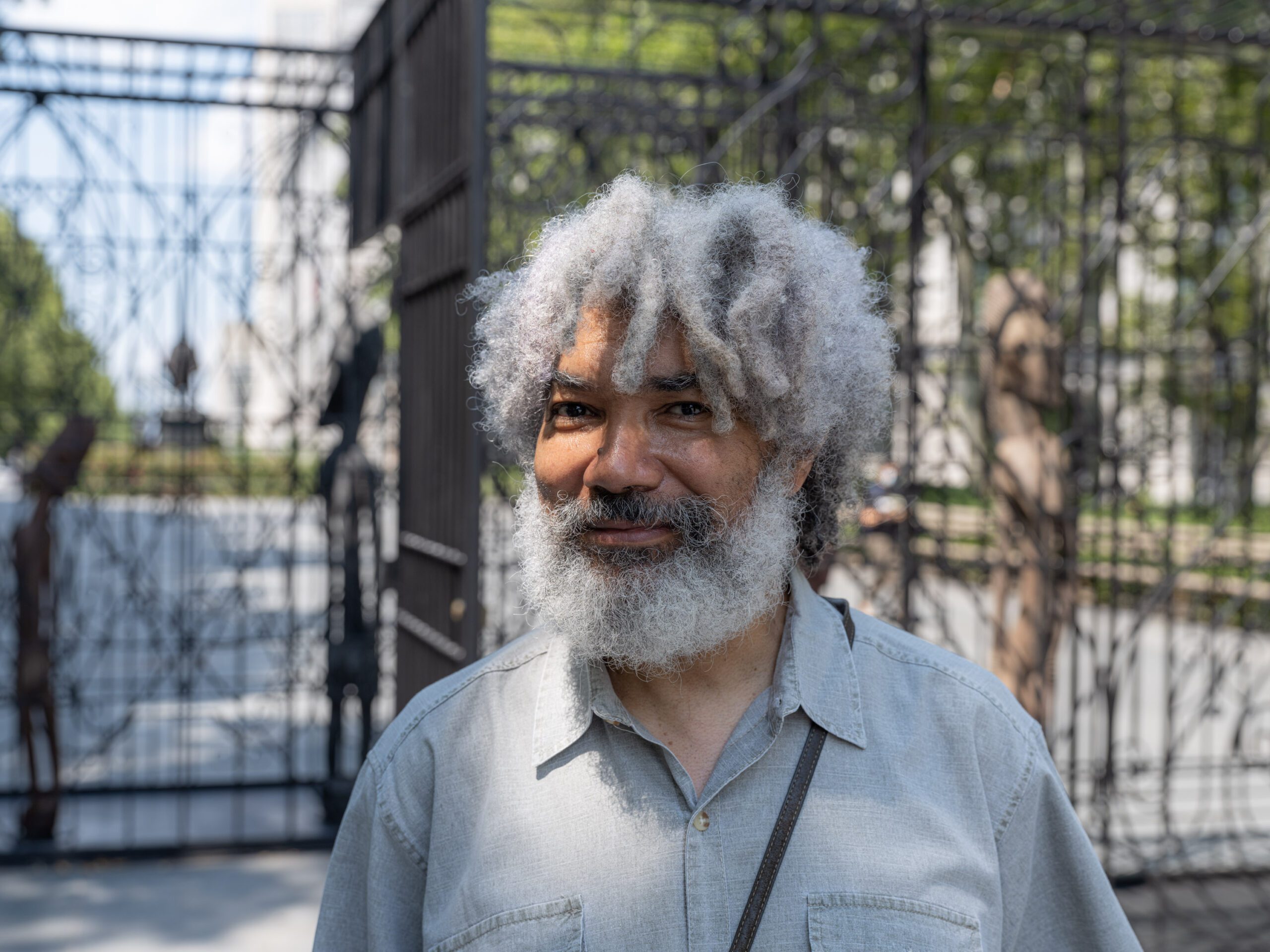

Fred Wilson (Courtesy of More Art, Photo: Kris Graves)
You might also like 

















